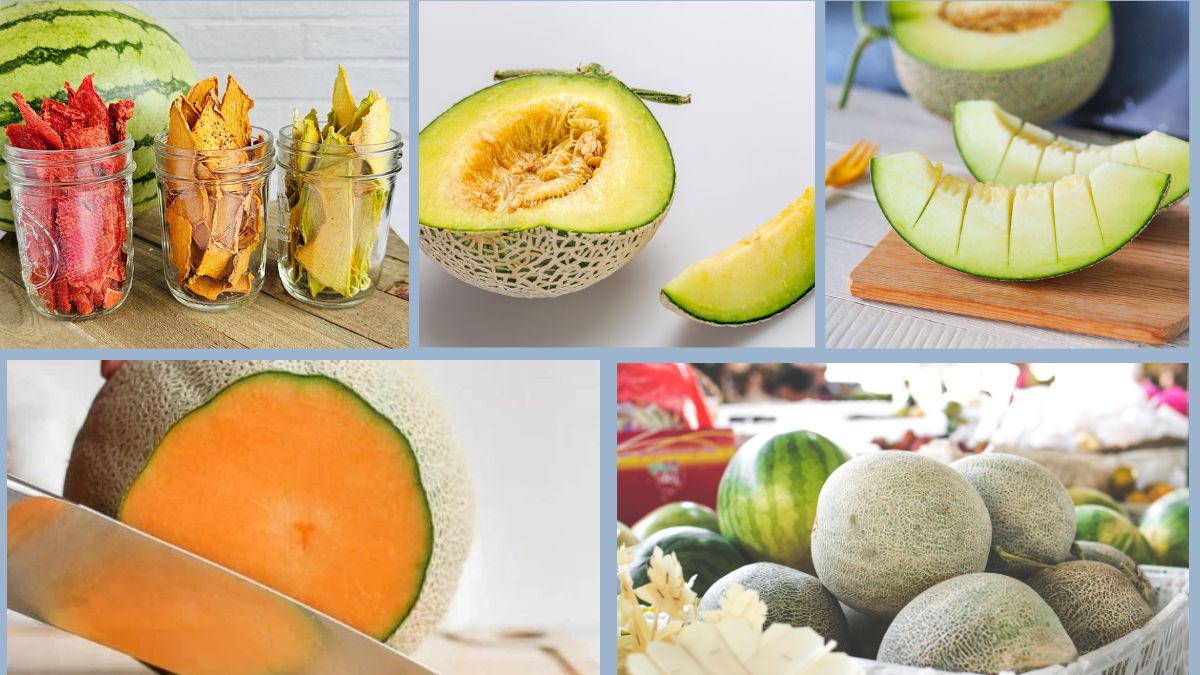Melons — especially cantaloupe and honeydew — are among the most refreshing and hydrating fruits of summer. Sweet, juicy, and rich in vitamins A and C, they’re perfect for snacking, salads, smoothies, and desserts. But because of their high water content and delicate nature, melons can spoil quickly if not stored correctly.
Whether you’ve picked up an underripe melon from the market or just sliced one open, knowing how to store cantaloupe and honeydew properly can make all the difference. This guide will walk you through every stage of melon storage — from choosing ripe ones to keeping them fresh longer — using only natural, plant-based methods, with no non-vegetarian ingredients or additives.
Understanding Cantaloupe and Honeydew
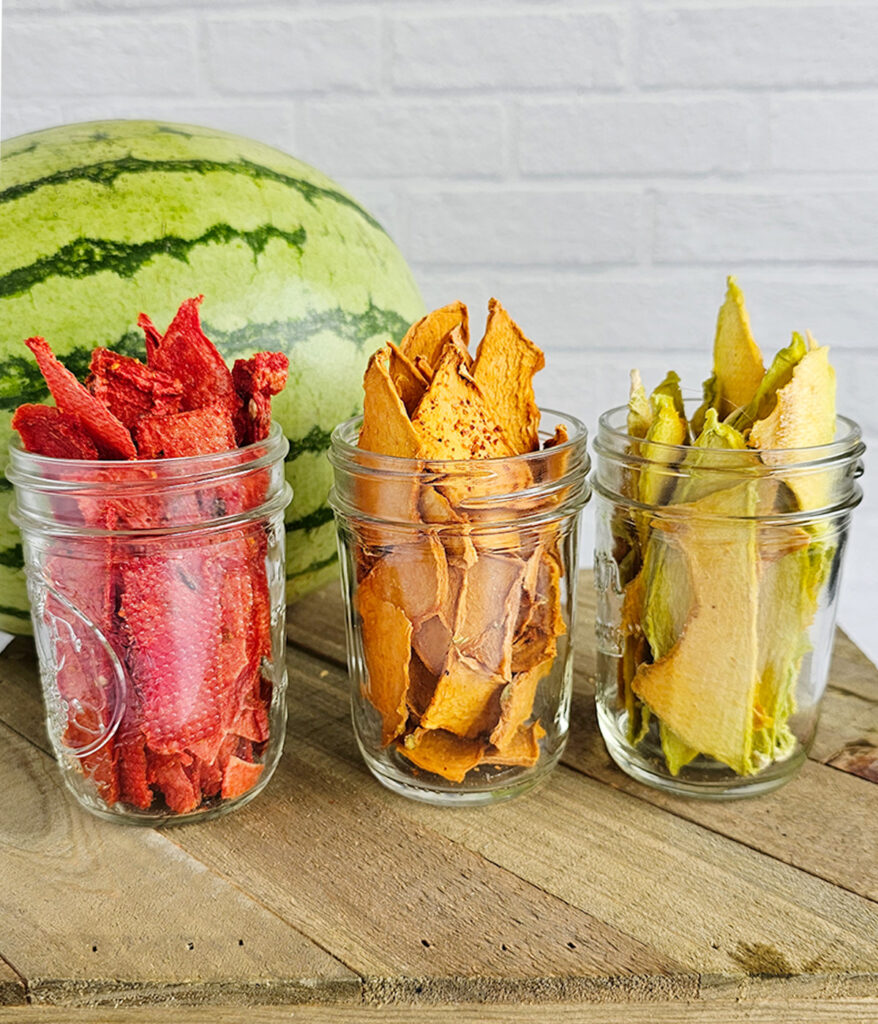
Both cantaloupe and honeydew are part of the Cucurbitaceae family, which also includes cucumbers and pumpkins. While they differ in appearance and taste, their storage methods are very similar.
Cantaloupe:
- Rough, netted rind
- Orange, sweet flesh
- Fragrant when ripe
Honeydew:
- Smooth, pale green or yellow rind
- Light green or white flesh
- Subtler aroma and flavor than cantaloupe
Both continue to ripen after harvest, but only slightly. Once fully ripe, they can spoil fast due to high sugar and water content.
Step 1: How to Tell If a Melon Is Ripe

Signs of Ripeness:
Cantaloupe:
- Golden or tan skin (not greenish)
- Sweet, musky fragrance
- Slight softness at the blossom end (opposite the stem)
- Netting on the rind looks well defined
Honeydew:
- Slight waxy feel to the rind
- Dull (not shiny) exterior
- Creamy yellowish undertone (for ripe honeydew)
- Slight softness at the blossom end
If your melon doesn’t smell sweet or feels rock-hard, it may need time to ripen before cutting.
Step 2: Storing Whole Unripe Melons at Room Temperature
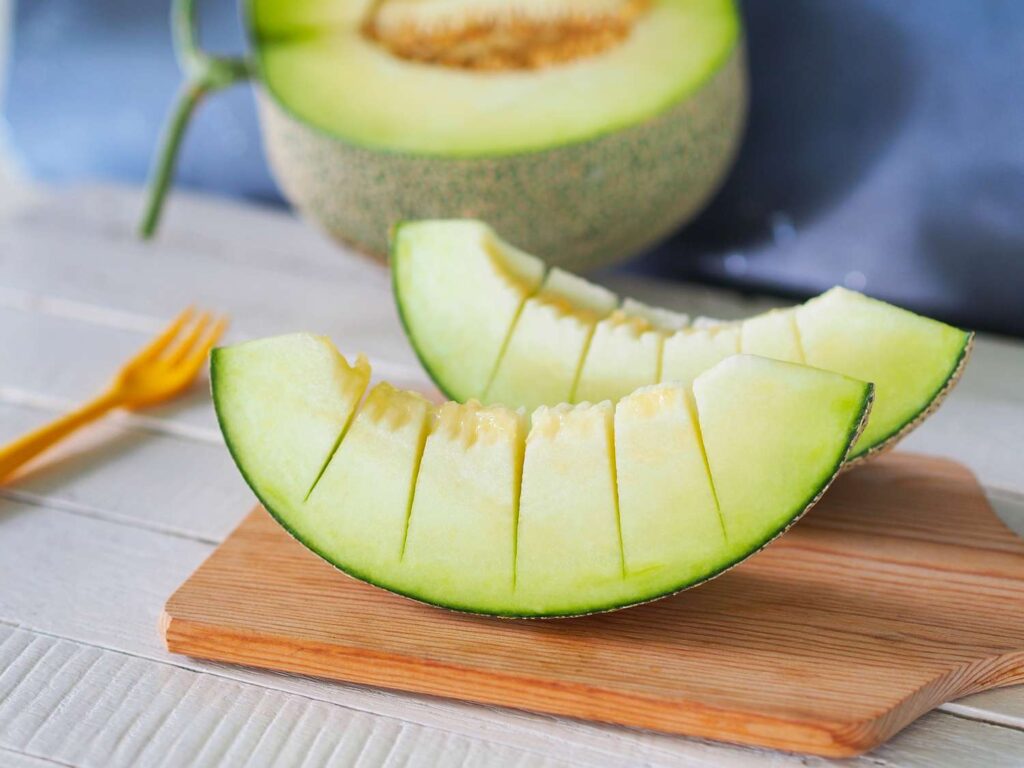
Let Melons Ripen Naturally:
If your cantaloupe or honeydew is underripe, allow it to ripen at room temperature:
- Place the melon on a counter or table, away from direct sunlight.
- Flip it every 12–24 hours to avoid flat spots and uneven ripening.
- Allow 1–3 days to ripen depending on its maturity when purchased.
Do not refrigerate unripe melons — cold temperatures slow ripening and degrade texture and flavor.
To Speed Up Ripening:
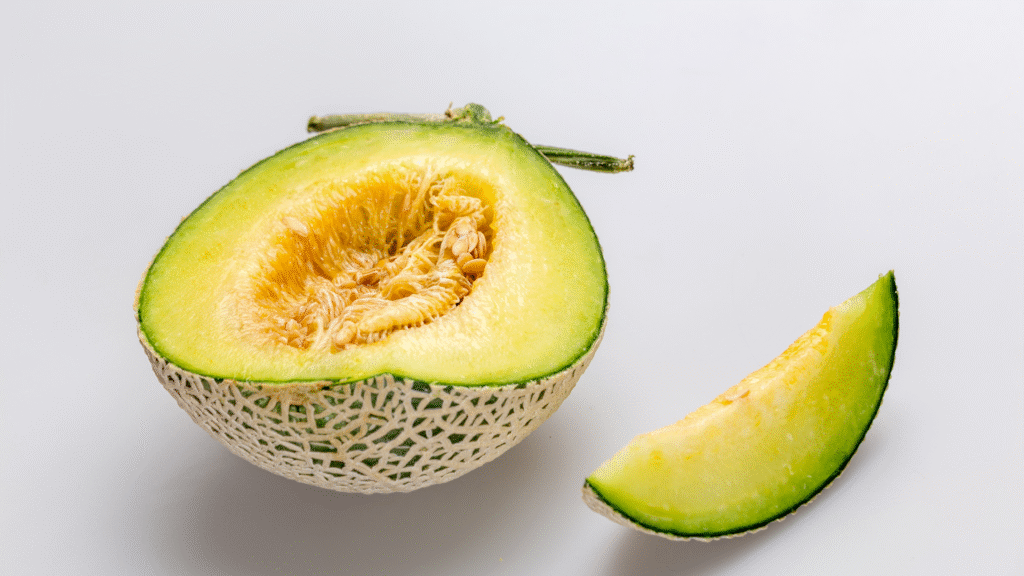
- Place the melon in a paper bag with a ripe banana or apple.
- These fruits release ethylene gas, which promotes ripening.
- Fold the bag lightly and leave on the counter.
Step 3: Storing Whole Ripe Melons in the Refrigerator
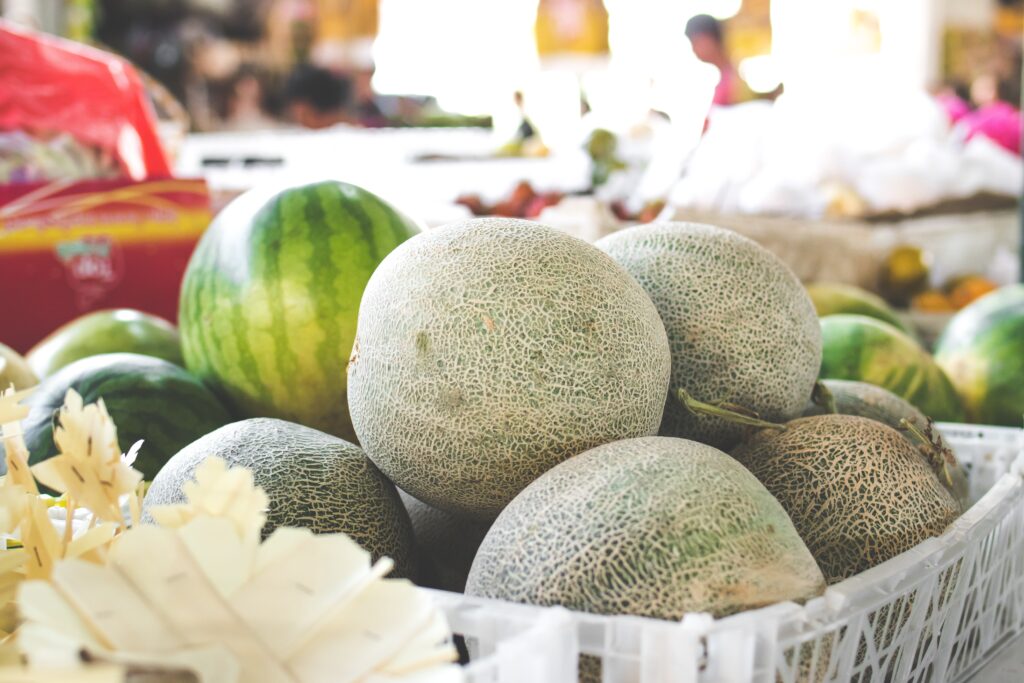
Once your melon is ripe (sweet smell, slight softness), it’s best to refrigerate it immediately to preserve its freshness.
Whole Melon in the Fridge:
- Store in the crisper drawer or on a fridge shelf.
- Keep it dry and unwrapped unless the skin is damaged.
- Can be stored whole for up to 5–7 days.
Refrigeration slows enzymatic activity and sugar breakdown, helping your melon stay juicy, not soggy.
Step 4: Storing Cut or Sliced Melon Properly
Once sliced, melons become highly perishable due to exposure to air and moisture. Proper storage is crucial to maintain freshness and prevent bacterial growth.
How to Store Cut Melon:
- Remove seeds from the cavity (they attract moisture and spoilage).
- Cut into cubes or wedges as needed.
- Store in a glass or BPA-free plastic container with a tight lid.
- Place a piece of unbleached paper towel in the container to absorb excess moisture.
- Keep refrigerated.
Optional Tip:
Lightly spritzing cut melon with lemon or lime juice helps preserve its color and adds a zesty kick (especially for fruit salads).
Shelf Life of Cut Melon:
- Cantaloupe: 3–4 days in fridge
- Honeydew: 4–5 days in fridge
Discard if the fruit becomes overly soft, slimy, or develops a sour smell.
Step 5: Freezing Melon for Later Use
While fresh melon is best, freezing is a good option if you have excess ripe fruit and want to avoid waste.
How to Freeze Melon:
- Cut into cubes or scoop into balls.
- Spread pieces on a parchment-lined baking sheet.
- Freeze for 2–3 hours until solid.
- Transfer to a freezer-safe bag or container.
Freezer Shelf Life:
Up to 10–12 months
Best Uses for Frozen Melon:
- Smoothies
- Sorbets
- Infused water
- Fruit popsicles
Tip: Add frozen melon cubes to water or iced tea for a refreshing twist.
Common Mistakes to Avoid When Storing Melons
Mistake 1: Washing the Whole Melon Before Storage
Moisture on the rind promotes mold. Wash only before slicing.
Mistake 2: Leaving Cut Melon Uncovered
Exposed melon absorbs fridge odors and dries out. Always store in sealed containers.
Mistake 3: Storing with Strong-Smelling Foods
Melon flesh is porous and picks up other odors (like onions or garlic). Keep separate.
Mistake 4: Freezing with Seeds or Skin
This results in uneven freezing and a mushy texture when thawed. Always remove rind and seeds first.
Creative Vegetarian Uses for Ripe or Slightly Overripe Melons
Have a melon that’s a bit too soft to eat fresh? Don’t throw it out — use it in:
- Melon smoothies with mint and lime
- Melon gazpacho with cucumber and basil
- Melon popsicles with coconut milk
- Fruit compote with lemon and agave syrup
- Melon salad with plant-based feta and herbs
All these ideas are 100% vegetarian — no animal-based preservatives or additives needed!
Quick Reference: Melon Storage Summary
| Melon Stage | Storage Method | Ideal Duration | Notes |
|---|---|---|---|
| Unripe (whole) | Room temperature | 1–3 days | Turn daily, check for ripening |
| Ripe (whole) | Fridge (unwrapped) | 5–7 days | Store in crisper drawer |
| Cut/sliced | Airtight container in fridge | 3–5 days | Optional lemon juice to preserve color |
| Frozen (cubed) | Freezer in airtight bag | 10–12 months | Best for smoothies and desserts |
Final Thoughts: Store Naturally, Enjoy Fully
Melons are summer’s ultimate refreshers — hydrating, nutrient-rich, and naturally sweet. But they need a little care to stay at their best. By storing cantaloupe and honeydew properly at each stage — from unripe to ripe to cut — you can extend their shelf life, prevent waste, and keep your fruit flavorful and safe to eat.
Remember:
- Let them ripen at room temp.
- Chill once ripe.
- Always seal slices properly.
- Use lemon juice for natural preservation.
- Freeze only when necessary — and creatively!
With these plant-based, eco-friendly techniques, you’ll never have to throw away a spoiled melon again. Instead, you’ll enjoy every juicy bite — at peak ripeness.
